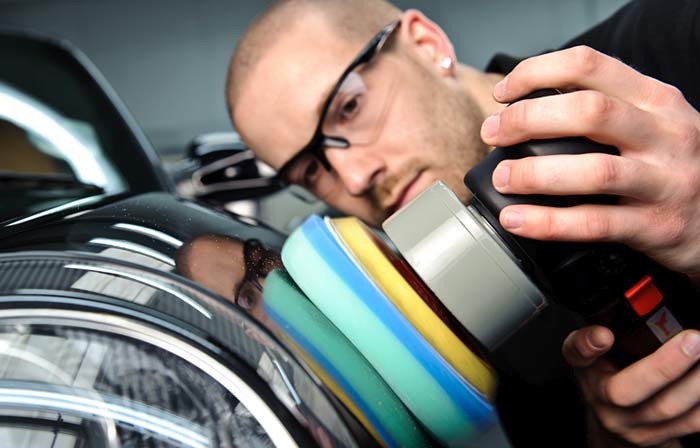
How to remove scratches on the car - do it yourself
Almost every car owner is faced with such an unpleasant phenomenon as scratches on the paintwork of the car. They arise for various reasons:
- pebbles flying out from under the wheels;
- parking neighbors carelessly opening doors;
- hail, precipitation.
Regardless of what caused the scratch, you need to get rid of it as soon as possible, because the paintwork will suffer, the cracks will expand, and this ultimately leads to body corrosion, which is much more difficult to deal with.

If as a result of long-term operation there are a lot of scratches on the body, then probably a cheaper option would be to contact a special car service, where specialists will do everything at the highest level: get rid of rust, select the desired shade according to the coating code, sand everything and polish it, and the car will be like new. Although you can get rid of scratches on your own.
How to get rid of a scratch?
First of all, you need to determine the nature of the damage itself.
shallow scratchesthat do not even reach the factory primer layer can be painted over with a special pencil, and the surface itself can be polished. You don't even have to choose the right tone. In principle, a scratch removal pencil should be in the arsenal of any driver, it is quite simple to use and there is now a lot of advertising on this topic in any media.
There are also special non-abrasive polishes on sale, specially designed for shallow damage, they will mask the scratch well and will not damage the coating in neighboring areas.
If the scratch reaches the primer, and even worse - the metal, then you need to act in a completely different way. You will need:
- fine sandpaper;
- a can of properly selected paint;
- grinding paste;
- spatula.
You can also use a sander with different attachments - it's easier than manually overwriting a scratch.

Before proceeding with the removal of damage, remove all dirt and grease - degrease the surface of the body around the scratch. For this purpose, there is no need to rush to use ordinary white spirit or solvent 647, the precursors included in their composition can damage the varnish. Buy a degreaser suitable for your type of paintwork (PCP). That is, if the coating is two-layer - a layer of paint and protective varnish - then it is better to consult in the salon or look through the instructions, but if the coating is single-layer, then solvents should come up.
So, the sequence of actions during getting rid of deep scratches is as follows:
1) Getting rid of rust - use sandpaper or a soft brush, you need to act carefully so as not to damage neighboring areas. After removing rust, wipe the surface with degreasing compounds, and then wipe dry with a napkin.
2) If not only a scratch has formed, but also small dents and cracks, then putty must be applied to the cleaned area. It is sold in any store complete with a hardener. After applying the putty, you need to wait until it is completely dry and give the coating a perfectly even look using a grinder with medium and then fine-grained nozzles, if there is no machine, then sandpaper P 1500 and P 2000 will do.
3) Then a primer is applied. If there is a spray gun or spray gun - excellent - it will be possible to apply the primer perfectly evenly without streaks, but if there is no such tool at hand, then you can use a thin brush or swab, and then wait for it to dry and grind everything again.
4) Well, after the complete drying of the soil, you can proceed to the final action - the actual painting. There is no need to talk about how important it is to choose the right color, since the human eye can notice differences in a quarter of a tone, and in different lighting these imperfections are even more noticeable. In addition, over time, the color changes and does not match the factory.
Paint should be applied in two layers, waiting for complete drying. And then you need to apply varnish. All resulting irregularities are removed with fine abrasive paper. After polishing, no traces of cracks and scratches should ideally remain.
Loading…
